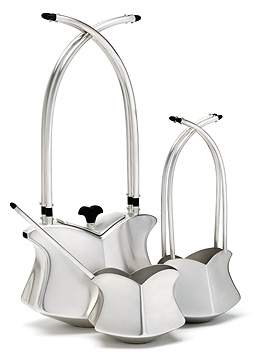An Alumni of the Chicago Institute of Design and the New York Institute of Fine Arts, George Rickey Began his path into sculpture during the 1950’s. His sculptures exude a sense of dynamism that can be considered to be kinetic in genre.In 1985, Rickey had a retrospective of more than a hundred of his personal works located in South Bend Indiana. He told compelling stories of his curious life before and during his artistic path. Rickey lived to a ripe old age (95) and today many of his pieces are remembered as symbols of his long legacy in the art world.Many of his works have had residence in prestigious universities like the Rensselaer Polytechnic Institute in Troy.
Inspired by the work of Alexander Calder, the famous mobile sculptor, Rickey combined his passion for engineering with his artistic enthusiasm. His mechanical ideas made use of large, often incredibly heavy materials that were made to move at the slightest current of wind. Kinetic sculpture grew on him more and more each day he was alive. His appreciation for motion created the beauties he so often shared with the rest of the artistic community.










 Sculpture by Han Sai Por – Photography by Stefano Sartor
Sculpture by Han Sai Por – Photography by Stefano Sartor